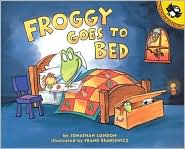I watch a lot of TV. In fact, this entry was delayed because I was waiting to see if Nancy Grace would implode on live television with not-so-pent up rage. Then yesterday I spent the evening watching True Blood. Twice…
 …for the plot, of course. It’s soooo hard to keep track of the humans, vampires, were-people, witches and fairies, with people screaming, “You ate my fairy godmother!”
…for the plot, of course. It’s soooo hard to keep track of the humans, vampires, were-people, witches and fairies, with people screaming, “You ate my fairy godmother!”As a child I learned tons from TV. Like when General Hospital’s Frisco and Felicia got married, but they were too broke for a honeymoon so they went to his brownstone apartment and pretended to go places. (“Today we’re in the Middle East! Just don’t open the curtains…”) Deluding---sorry---pretending you’re elsewhere because you’re too broke to go there is a valid lesson for today.
This isn’t to say I spent most of my childhood watching a demon-possessed Marlena levitate. The great majority of what I watched was on PBS. I got the see my favorite person in the world, Miss Piggy, view Wild Kingdom, and witness Bob Ross paint happy little trees everywhere. Reading Rainbow, Schoolhouse Rock, many educational shows made up my viewing schedule. I thought I had a pretty good childhood…
Then I heard how horrible TV is for kids.
This I didn’t get. TV couldn't be all bad. After all, at least one child would have been strangled had I not been able to park him in front of Barney while I dismantled the VCR in order to repair the damage he’d done to it. True, if the only thing your child views is Maury Povich telling a man, “You are not the father!” while the mother runs off stage, this is not a good thing. But is TV necessarily bad? When I heard about the class “Learning from Elmo, Blue and Dora: Applying the Science of Children's Educational Television to Storytime,” I figured I needed to see what was up.
The presenters, Jennifer Bigheart and Maria Cahill, neither demonize or endorse television watching for children. One did not allow her children any screen time and the other said, “Go for it!” Fine, those were not her exact words. However, they discussed key elements of educational television that we can incorporate into our library programs:
Relevant themes
“How many story hours on teddy bears have you done?” one presenter asked. Answer: probably too many. We use colors, numbers and ABCs as themes. But when was the last time we did calendar, manners, weather or seasons themes? My season themes usually involve orange hand cutouts or snowflakes. They don’t exactly go into why we have season. That’s being corrected. Find more themes that are relevant to a child’s educational needs.
Non-fiction has a place
I love books in which frogs talk and eat bowls of flies. Pictures books are fine, yet we need to augment them with non-fiction material. Parents have a difficult time finding appropriate non-fiction materials for young children, so try reading the funny story during story hour and setting up a display of non-fiction books on the same topic.
 Teachable moments
Teachable momentsOur motion sensor lights were constantly turning off during programs. One time a toddler asked, “Why are the lights off?” I said the first thing that came to mind: “We are conserving energy.” Turns out, according to the presenters, this is the right thing to do. If something happens during your program, don’t ignore it; acknowledge it and talk about it for a while. Yes, it may lead to other questions and going off topic. This is a good thing.
Repetition
Did the kids really get into the story? Read it again! Okay, I won’t be doing that---it would drive me nuts. However, now that things float, you can order a few extra copies of a book and let the parents decide if they want to read the story over and over (and over) again without you unduly suffering.
Discussion
At the end of the story feel free to ask the children about the plot line. Establish that books have a beginning, middle and end. Ask, “What happened at the start of the story?” “Do you remember the main character’s name?” If there was a moral ask them what they thought it was. Was there bad behavior in the book? Ask them if it is appropriate to write on the bathroom wall with lipsticks and lotions like in 10 Little Lambs.
Variations
Pull an aspect out of a book and use variations of the word base. For example, when reading a book in which they drove a car, use the words drive, driving, drove, and driven. Reading a numbers book? Go over once, twice, thrice, first, second, third, etc.
Since I love Sesame Street, there is no way I am ending this without showing you my favorite clip ever!

